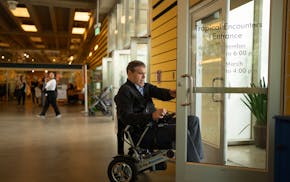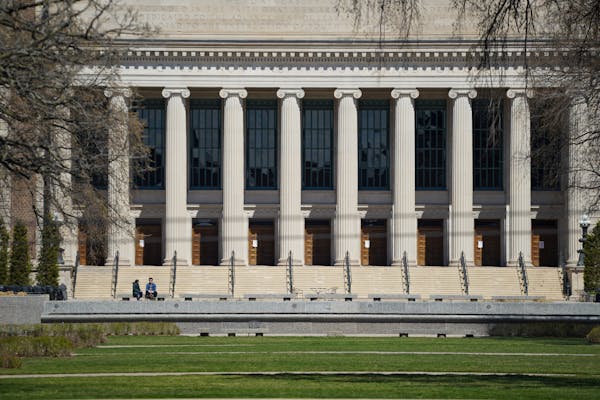The Free Application for Federal Student Aid opened later than usual in December — but with changes aimed at making it easier for students to apply for financial aid to help pay for college.
More than 225,000 Minnesotans fill out the form known as the FAFSA in a typical year. It's used to determine which state and federal grants students receive, and some colleges also use it to decide if students are eligible for scholarships they offer.
"The biggest message we want families to hear is to go do the FAFSA, whether they think they're going to qualify or not," said Wendy Robinson, assistant commissioner for the Minnesota Office of Higher Education. "Keep that door open, find out what you might be eligible for as a first step."
The form typically launches at StudentAid.gov in October, but it was late this year because the U.S. Department of Education is updating it — and continuing to adjust to make sure it functions correctly online. The department said the FAFSA may be unavailable at times during the "soft launch," but noted any information that families submit will be saved.
The new form should be shorter for some families. Some information will be automatically filled in based on tax returns, and some of the formulas used for calculating aid are changing.
The delay, though, means students can expect to receive their loan and scholarship packages later than usual, leaving them with less time to evaluate competing offers before deciding where to enroll.
Here are a few things to know:
What's new this year?
The form will be shorter for some people. While the number of questions depends on each person's financial situation, the U.S. Department of Education predicts that some people will need to answer as few as 18 questions, which should take less than 10 minutes.
Some students might need to report information for spouses or stepparents who weren't considered in previous years, and the department has released guides at StudentAid.gov to help people figure out whose income they might need to disclose.
The updated formulas also eliminate the so-called "sibling discount," which had provided more aid to students who also had siblings enrolled in college.
"There may be some families who find, 'Oh, wait, our aid picture has changed in a way that is not beneficial to us,' " Robinson said.
But she also noted that other students could see an increase in aid. The U.S. Department of Education estimates that 610,000 additional students from low-income families will be eligible for the federal Pell Grants.
Some Minnesota families will also be eligible for new state programs. Starting in the fall of 2024, the North Star Promise will offer free tuition to students attending public schools in the state, if they meet certain academic requirements and their families make less than $80,000 per year. Students can apply for that by filling out the FAFSA or the Minnesota Dream Act Application.
How can students prepare?
Students and anyone contributing to their family income — parents and spouses, among others — will each need to create an online account at StudentAid.gov to complete the FAFSA, and education officials recommend creating those accounts now to save time after the form opens.
Students and their contributors will need to list their names, dates of birth, email addresses and Social Security numbers, if they have them. Tax information should automatically transfer over from the IRS, if families give their consent.
But the U.S. Department of Education also recommends having tax returns, child support records, and current balances for cash, savings and checking accounts handy. It says families should also know the net worth of their investments and businesses.
For a student starting classes in the fall of 2024, the aid calculations will be based on tax filings from 2022.
Robinson said families should be careful to make sure they're submitting through the official government websites. "They should never pay to submit a FAFSA," she said.
How will students know what aid they'll get?
Students will be able to share their information with up to 20 colleges and trade schools, an increase from past years.
Robinson said information must be submitted by June 30, but "there is no reason to wait that long." Some schools have earlier deadlines for getting priority consideration for grants and scholarships.
After completing the FAFSA, students should be on the lookout for letters from the schools where they've applied. The U.S. Department of Education says families should be careful not to accept unexpected offers of financial aid, as they could be scams. When in doubt, the department recommends checking in with the school's financial aid office to confirm the offer is legitimate.

From broken bones to a broken record: Unstoppable Swanson shines again

St. Paul officials acknowledge accessibility improvements needed at Como Zoo and Conservatory

St. Paul's Arborators play in the treetops: 'We're the world's only tree-climbing brass band'
Forest Lake High track athletes who were struck by car during a run expected to make full recovery

